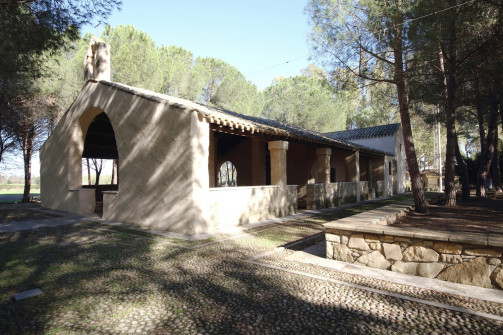It is located in the alluvial plain of Flumini Mannu, in the Campidano of Cagliari, about 25 km from the capital city. The territory is characterized by a flat morphology and fertile soils; an exception is an alignment of modest hills (P.ta Fanaris, M. Sa Pibiondada, M. Idda, M. Gutturu Gionis, etc.) to the west of the settlement, consisting of Tertiary volcanites and Paleozoic metamorphic rocks, which mark the transition between the Cixerri valley and the Campidanese plain.
This is ancient territory, already inhabited since the pre-Nuragic period. Evidence of this is provided by the evidence recovered at the Hypogeum of Santu Iroxi, also known as the “Tomb of the Warriors,” a site dating back to the Ozieri Culture (ca. 3000 B.C.) and Bonnnanaro, to which it owes its name to the large number of skeletons (more than 200) and the large number of copper swords and daggers found in the domus de janas. Also the alabaster “Mother Goddess” found at “Su Cungiau de Marcu” (kept at the Archaeological Museum of Cagliari) and the menhir “Sa Perda Lada”, a monolith with an anthropomorphic and ogive shape, located in a peripheral area of the village, testify to human presence as early as the Neolithic period.
Evidence of the Nuragic period is the Nuraghe of M. Idda, from which weapons and bronze objects come, and the
nuragic complex of Su Casteddu e Fanaris
(late Bronze Age). The remains of the fortress of Su Casteddu emerge from the hill of P.ta Fanaris and are also visible from SP 3 that leads from Decimoputzu to Vallermosa. The site assumes strategic importance both because of its geographical location at the transition between the Campidano and Cixerri valleys and because of the grandeur and extent of its structures. It is a complex polylobate nuraghe, probably built between the late Middle Bronze and Late Bronze Ages, which rises imposingly over the Campidanese plain. The complexity of the fortress, probably due to the succession of different construction phases, the number of towers and the antemural spaces surrounding the central keep to date are unknown; it is presumed to be one of the most impressive sites in the Campidanese area. The tour route covers a rough observation of the remains emerging from the hill.
Other monuments and places of historical and architectural interest include the Romanesque-style church of St. George and the adjoining tomb of Byzantine age, the country church and mill of St. Basil, and the late-Gothic patronal church of Our Lady of Grace.


